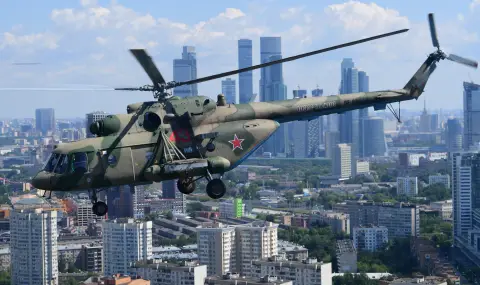The Russian army shot down its own helicopter near the city of Naro-Fominsk, located 70 kilometers from the capital Moscow. Then an absurd version of the incident was spread in the Russian media, Defense Express reports.
According to the information, the Russians shot down their own helicopter, mistaking it for a Ukrainian drone. The incident occurred at 10:40 p.m. local time.
Trying to cover up the shameful incident, the Russians had to quickly come up with a reason for shooting down the helicopter. And they blamed Ukraine.
The Kremlin-controlled media reported that a Ukrainian suicide drone, a type of helicopter, shot down the Russian machine near Naro-Fominsk. The problem is that the Ukrainian drone in question has a flight range of 300 kilometers, and the distance from the Ukrainian border to the crash site is 400 kilometers.
This narrative first appeared in Russian Telegram channels and was then widely disseminated in the Russian media. Apparently, it is easier for the Russians to claim that Ukraine can produce unique drones capable of safely reaching the outskirts of Moscow than to admit to chaos in their defenses.
However, this ridiculous explanation was made for a domestic audience without any critical thinking. The Russian version claims that a Ukrainian RZ-500 Ramzai unmanned helicopter shot down the Russian machine. The choice of the RZ-500 for this story is not surprising: it is the only known Ukrainian helicopter-type drone. It was publicly shown at a 2021 arms and security exhibition.
However, the Ramzai's design and capabilities were centered around a different role: it was positioned as a tool for tactical strikes and reconnaissance, rather than for one-way attacks.
Since then, the RZ-500 has largely faded from the public eye. In 2025, its viability in real combat conditions seems doubtful. Penetrating deep into enemy territory is a major challenge. Helicopter-based designs are generally not suited for long-range one-way attacks. Compared to fixed-wing drones, they have a shorter range, lower speed, reduced payload capacity, and significantly higher radar and acoustic visibility, while requiring more powerful engines.
